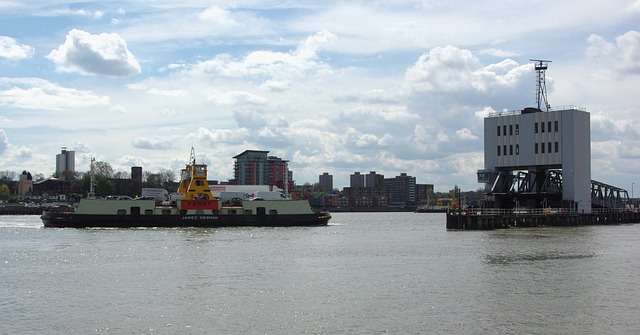
Situated in the historic borough of Greenwich, Woolwich is currently undergoing a profound transformation, one that is fundamentally altering both its image and trajectory. Long plagued by disrepair and a palpable sense of unease, this area is now in the throes of regeneration, bidding farewell to its once ominous reputation. The catalyst for this sweeping change is the now derelict Maryon Grove estate, which, for too long, cast an unsettling shadow over the community. With plans for demolition on the horizon, Woolwich stands at a crossroads, poised to welcome not only 165 new homes but also a renewed sense of vitality that the community has eagerly awaited.
The estates of Maryon Grove, Connaught, and Morris Walk are emblematic of a different time, having originated in the 1960s and now falling short of the evolving demands of Woolwich’s residents. These buildings are the physical manifestations of a dated design ethos, one which has been eclipsed by the exigencies of contemporary urban living. The degradation of these structures has led to a widely held view that they have outlived their usefulness. Against this backdrop, the ambitious One Woolwich initiative, helmed by the developer Lovell, has emerged. This project aspires to more than just the erection of new structures; it strives to weave the fabric of vibrant, sustainable communities that are well-equipped for the future, thereby avoiding the urban planning pitfalls of the past.
A responsive blueprint for regeneration has been carefully tailored to meet the community’s needs, with Greenwich Council exemplifying its commitment by acquiring 265 properties specifically earmarked for social housing. This strategic acquisition is a direct response to the critical need for affordable housing options and serves to reinforce the council’s pledge to nurture an inclusive community. Within the new development, 53% of the homes have been classified as ‘affordable housing’, a decision that solidifies the council’s determination to convert the prospect of opportunity into a tangible reality for its diverse population.
The scale of Woolwich’s metamorphosis is further magnified by the redevelopment of the expansive Morris Walk estate, which is expected to introduce an impressive 766 new properties to the area. This is part of a more extensive £557 million Woolwich Estates programme, a joint initiative between Lovell and PA Housing, which aims to deliver a total of 1,615 new homes. The programme conveys a resolute statement of intent, one that not only reimagines the urban fabric but also sets a precedent for regeneration projects throughout the United Kingdom.
The road to this transformation has been meticulous, with a keen focus on the safety and well-being of the existing community. Prior to the commencement of demolition, stringent measures were taken to eradicate asbestos from the Maryon Grove flats and to manage potential dust and noise pollution, thereby minimising the redevelopment’s intrusion into the daily lives of residents. The local council has also proactively monitored the site to deter anti-social behaviour, reflecting a comprehensive approach that extends beyond physical renovations to encompass the social dynamics of the community.
The renaissance of Maryon Grove and the adjacent estates marks a compelling chapter of proactive community engagement and astute governance. Residents, such as Alexandra Dubosch who lives in proximity to Maryon Grove, have expressed their concerns about the intimidating atmosphere of the estate and have long-awaited transformation. This redevelopment transcends the mere construction of new buildings; it symbolises the erasure of a fearful legacy and fosters a renewed sense of security, belonging, and community pride.
With the final Maryon Grove residents having been relocated in March 2023, a significant threshold has been crossed, clearing the path for demolition and subsequent building work. With outline planning permission already secured and a detailed application anticipated in the near future, a palpable sense of expectation can be felt among the community. The project stands as a testament to hope, heralding a leap towards a more prosperous and sustainable Woolwich.
The rebirth of this area aligns with Greenwich Council’s wider strategic vision, which includes the creation of over 1,500 new homes in Woolwich, thus revitalising the district’s fortunes and repositioning it as a desirable location. As the remnants of a disconcerting past make way for a new dawn, Woolwich stands on the threshold of a transformative epoch in its storied history. The redevelopment signifies not only the emergence of modern living spaces and community amenities but also a rebirth of the very spirit of togetherness that defines the area.
Woolwich’s journey serves as a testament to the power of community-centric redevelopment initiatives. The revitalisation of Maryon Grove and its surrounding areas marks a significant step in redefining the urban landscape, establishing a benchmark for future projects. In undertaking this transformative endeavour, Woolwich is redefining itself and, in doing so, illuminates the path for communities worldwide, showcasing the extraordinary outcomes that can be achieved when a shared vision for a better future materialises into a concrete reality.


Be the first to comment